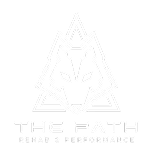The #1 Cause of Low Back Pain In Golf

Yes, this blog title may be a little clickbaity. But among swing coaches and golf physical therapists, there is a near-general consensus that this swing characteristic has an extremely high correlation with low back pain. This swing characteristic is known as reverse spine angle. The aim of this blog is to explain the characteristics of reverse spine angle as well as why this swing flaw contributes to low back pain. Thus, encouraging you to seek help in order to build a more powerful and stable swing as well as improve your longevity in the game of golf.
Reverse spine angle is essentially when your head is ahead of your hips during your swing. This can occur during the back swing and the down swing. Note the immediate pictures below (in red). Both lines are running from our 7-8 o’clock to a 1-2 o’clock fashion. This is known as reverse spine angle. With a proper spine angle, the line from the hips to the head will be either near-vertical or the head will be behind the rotated hips (in green). While the latter pictures could technically be argued as excessive, there is no doubt that this swing characteristic sets up for improved power and decreased chance for low back pain, which will be discussed in the next paragraph. Distinguishing between normal and reverse spine angle is an important factor to eliminating low back pain in golf.
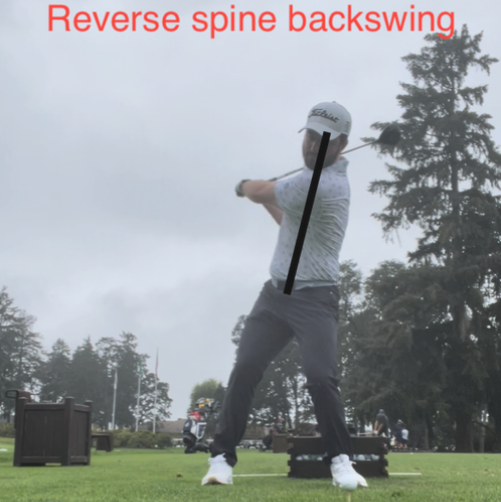
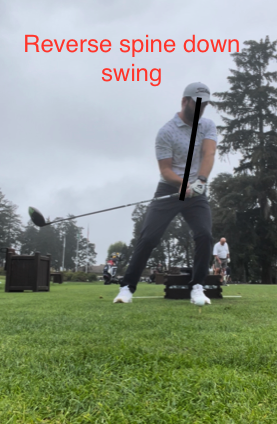
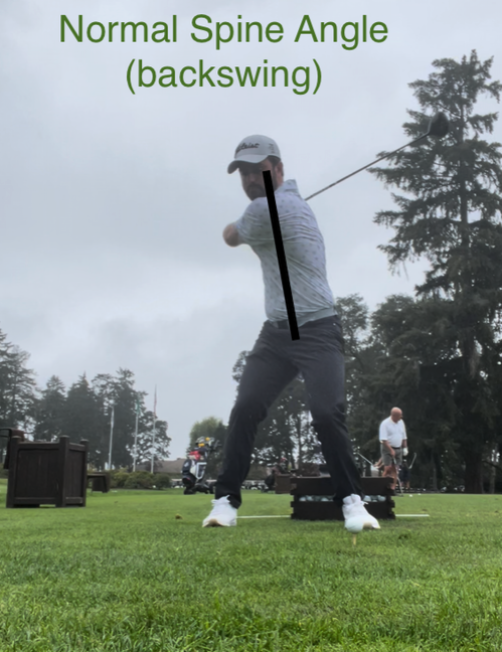
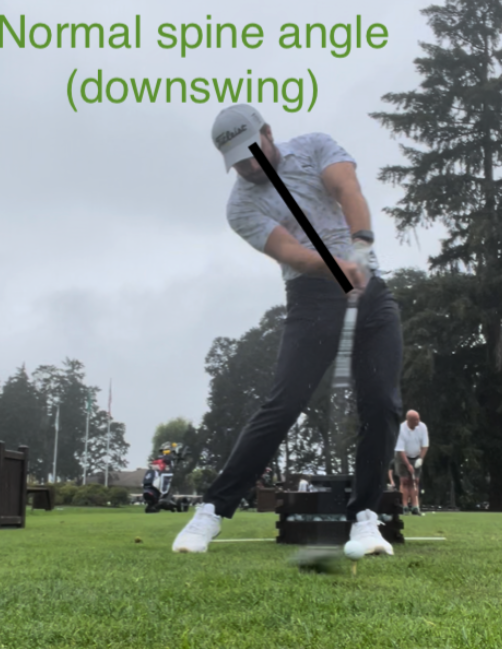
So, the next logical question is, why does reverse spine angle typically cause low back pain and lose distance? Contrary to popular belief, our lower body (hips and core) are the prime generators of power in the golf swing, not our arms and shoulders. The reverse spine angle inherently inhibits the abdominal musculature during the swing, causing excessive use of the thoracic spine and shoulders to generate force. This results in undesirably excessive compressive loads placed on one particular side of the spine at impact. Over time, this can create an overuse injury in your back from the awkward torque that is being placed on your back. Your body can take it… until it can’t take it anymore, which results in pain. Reverse spine angle is an inefficient and non-optimal swing characteristic that should be addressed as soon as possible, if necessary.
If you have low back pain with golf, have a golf coach or golf physical therapist analyze your swing. Perhaps reverse spine angle is contributing to your symptoms. From a clinical standpoint, we must remove the repetitive, toxic driver of your symptoms. As a result, you can reduce symptoms and potentially add some serious distance to your swing. If you are having pain with golf, consider seeing a Titleist Performance Institute certified golf physical therapist. At The PATH Rehab & Performance, golf physical therapy can help recognize non optimal swing characteristics and help you build a foundation of true stability to keep you golfing pain-free for a lifetime! Consider taking advantage of one of our free 30-minute phone consultations, where we can discuss symptoms, goals, and answer any questions and/or concerns you may have. Golf is considered to be a lifetime sport for a reason. Seek help today!
Sign up for our newsletter
Join our community and receive exclusive physical therapy insights, training strategies, and recovery techniques tailored for active people.
